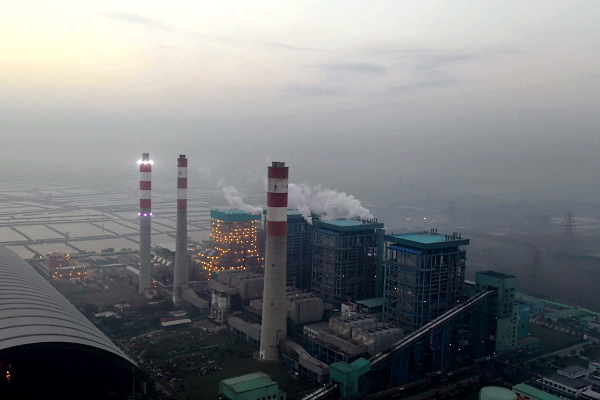After receiving the necessary documents (application form and project presentation), our team will try to review your request as soon as possible, and leading experts will offer the best options for project funding.
Among all types of fossil fuels, thermal coal is the most widespread and provides the most reliable supply.
For this reason, investments in the thermal coal industry and financing the construction of coal-fired thermal power plants have played a critical role in the growth of the global economy and ensuring the energy security of entire countries for many decades.
Growth of investments in coal mining on a global scale
According to the estimates of the International Energy Agency, total investments in the energy sector in 2022 will amount to $2.4 trillion.Although $1.4 trillion of the total investment will be spent on green energy, some fossil fuels are regaining their investment attractiveness against the background of restrictions on gas supplies to the EU. In particular, the acute gas crisis forced some industrialized countries to think about coal mining, which can temporarily replace Russian natural gas, which was once supposed to serve as a reliable bridge for an ambitious green transition.
The IEA notes that total investment in coal supply chains reached $105 billion in 2021, showing 10% growth compared to the previous year.
The crisis situation in Europe looks set to make major adjustments to the EU's energy plans and spur further global investment in coal mining, as well as reconservation, modernization and even construction of new coal-fired power plants.
This year, experts expect an increase in financing of the industry by about 10%. A major role in the development of the coal industry is played by Asian countries, in particular China and India, which plan to invest more than $80 billion in this sector. These investments look quite rational and timely, because coal prices show a clear upward trend. According to Business Insider, the highest prices were recorded in the autumn of 2022, when a peak of $460 per ton was reached.
The current price of coal exceeds $400 per ton, and is unlikely to fall below this mark in the near future.
It is obvious that the constantly growing demand and gas supply interruptions in Europe on the eve of the winter period will stimulate further growth of coal prices.
Moreover, global business is witnessing an unprecedented redistribution of energy resource flows. Thus, the European Union is rapidly increasing coal imports from South Africa and even Australia, while sanctioned Russia is looking for new sales markets outside the EU.
However, it must be recognized that the coal market was under pressure even before the start of the conflict. The difficult geopolitical situation only pushed the world to actively seek more affordable alternatives to natural gas.
This alternative has existed for a long time in the form of closed coal-fired thermal power plants, which now need additional funding to bring them back to life.
Bank loans for thermal coal industry and coal-fired TPPs
Despite the widely proclaimed goals of the energy transition, the truth is that banking institutions, in particular the largest commercial banks in the world, have never abandoned the financing of coal industry.Recent research shows that commercial banks have committed more than $1.5 trillion in financing to the coal industry between 2019 and 2021. Moreover, banks from the US, UK, Canada, Japan, China and India were responsible for 80% of global investment in the sector.
Coal is the most environmentally harmful type of fossil fuel, but it also remains one of the most affordable sources of heat and electricity production. This explains the growing interest of commercial banks and other financial institutions in lending to the coal industry against the background of market and geopolitical changes in recent years. Loud statements from governments cannot overstate the fact that businesses need a cheap source of energy right now.
Today, there are more than 8,000 coal-fired thermal power plants of all sizes in the world, with a total installed capacity of about 2 TW.
The leader in this sector remains China (more than 1 TW), the world's largest producer and, at the same time, the largest coal importer.
India and the United States hold second and third place, with more than 200 GW of installed capacity each.
Over a two-year period, about five hundred commercial banks around the world issued loans and provided undrewriting services for more than $1.2 trillion to companies included in the Global Coal Exit List.
This is strong support for thermal coal production, which has every reason to grow in the coming years.
As a reminder, the Global Coal Exit List includes such world-famous energy giants as RWE AG (Germany), Glencore PLC (Switzerland), Peabody Energy Corp (USA), Eskom Holdings SOC Ltd (South Africa), as well as a number of other companies related to thermal coal.

Industrial Commercial Bank of China (PRC), China International Trust and Investment Corporation (PRC), JPMorgan Chase (USA) and a number of other well-known banks can be named among the largest financial institutions that have provided loans and underwriting services to coal industry in recent years.
The world's largest investment companies, such as Vanguard and Blackrock, also have strong financial interests in the industry. There is every reason to believe that this list will expand against the background of growing demand for coal.
By the end of 2021, many large banks have announced their intention to reduce loans to the thermal coal industry.
In particular, HSBC Holdings planned to reduce funding to the sector by at least 50% by 2030 and end it entirely by 2040. However, the question remains whether financial institutions will be as determined to go green after the significant increase in the price of thermal coal.
Even if we set aside regulatory issues, the financing of coal mining and the construction of coal-fired thermal power plants creates certain ethical dilemmas for bank clients. A Market Forces survey in 2021 found that 80% of Barclays and HSBC customers were unaware of their bank's role in financing fossil fuel production.
Of these, more than 10% said they would most likely consider switching to a more "ethical" bank.
On the scale of these financial giants, we are talking about the potential loss of hundreds of thousands of clients.
What are the benefits and risks of further bank financing of thermal coal projects?
According to Swiss Re, climate change could reduce global GDP by 11-14% by 2050 compared to a world without climate change. This corresponds to a loss of $23 trillion, which significantly exceeds the scale of the 2008 economic crisis. On the other hand, the abandonment of traditional thermal power plants on the most common and affordable type of fossil fuel will create immediate problems for business.
This would cause huge immediate losses, and would also make the economy vulnerable to natural gas exporting countries trying to blackmail the world with a gas tap. In any case, the demand for investment loans and short-term financing from the coal industry will grow in the near future.
ESFC Investment Group is ready to offer a customized solution for any investment project in this field.
We finance the construction of coal-fired TPPs, the modernization of thermal power plants, the construction and expansion of coal mines and quarries, and other projects related to thermal coal.
Contact us for details.
























